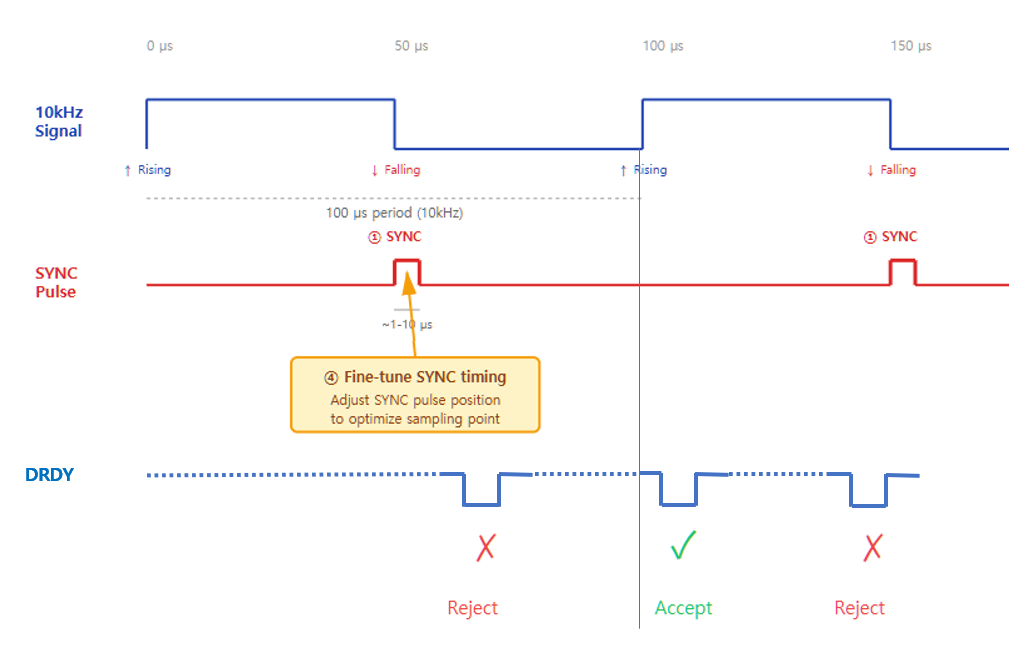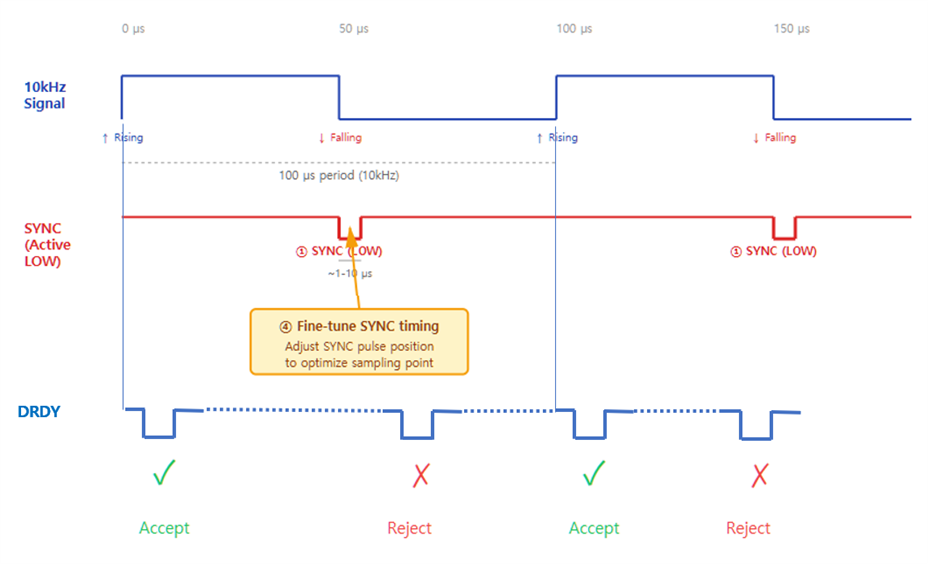Tool/software:
Hi Support Team,
I would like to achieve exactly 10 kSPS sampling rate synchronized to an external 10 kHz signal's rising edge.
Board Configuration:
- FPGA connected to ADS131M02
- 2 ADC input channels
- Single-ended input: AINnP only (AINnN connected to GND)
My Strategy:
- Configure ADC for 64 kSPS in continuous-conversion mode
- Send SYNC pulse synchronized to the external 10 kHz signal's falling edge
- Read all ADC samples at every DRDY falling edge
- Accept only the ADC data sampled immediately after the 10 kHz rising edge
- Adjust when the SYNC pulse is generated to fine-tune where the sampling occurs within each 10 kHz period


Questions:
- Is this approach reasonable and feasible?
- Are there any recommended best practices or potential issues I should be aware of?
- Would phase calibration be helpful in this application?
BTW there seems to be a typo at table 8-2 of the datasheet( SBAS853A – JANUARY 2020 – REVISED APRIL 2021 )
I think OSR 64 corresponds to 64kSPS

Thank you for your assistance.
Best regards,
Jason Lee

